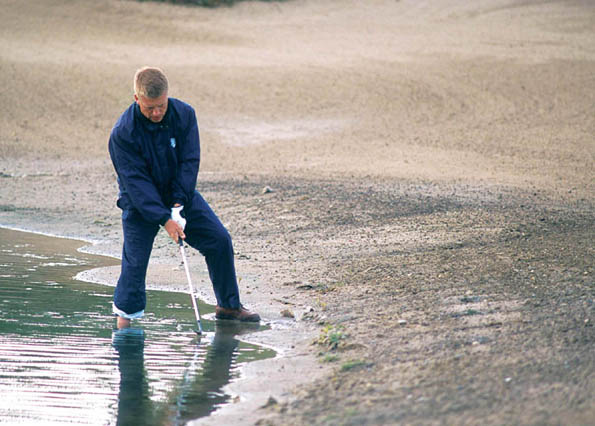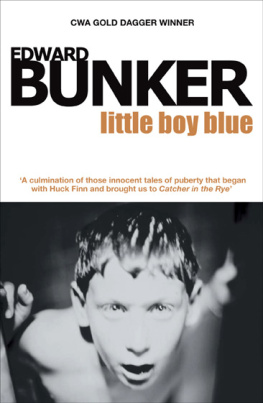

SAVING PAR
How to Play the Toughest Shots in Golf
TODD SONES
with John Monteleone

ACKNOWLEDGMENTS
Thank you to Ray and Jan Plote and their continued support of the Impact Golf School at Whitedeer Run Golf Club in Vernon Hills, Illi nois, where the photographs for this book were taken. Thanks also to the photographers, Barry Havens and Mike Plunkett. I would like also to acknowledge and thank all the members of the PGA of America and members of the Top 100 Teachers in America as selected by Golf Magazine. This book is an accumulation of the many lessons I have learned from my peers.
Special thanks to writer John Monteleone, who not only collaborated with me to get my ideas down on paper but also suggested the idea of doing this book in the first place.
2005 by Mountain Lion, Inc. and Todd Sones
All rights reserved. No part of this publication may be reproduced or transmitted in any form or by any means, electronic or mechanical, including photocopying, recording, or any other information storage and retrieval system, without the written permission of the publisher.
Book design by Bob Antler, Antler Designworks and Susan P. Eugster
Library of Congress Cataloging-in-Publication Data
Sones, Todd.
Saving par : how to play the 40 toughest shots in golf / Todd Sones with John Monteleone.
p. cm.
Includes index.
eISBN-13 9781609616366 ebook
ISBN-13 9781594862366 paperback
ISBN-10 1594862362 paperback
1. Golf.I. Monteleone, John J. II. Title.
GV965.S6723 2005 |
796.3523dc22 | 2005001388 |

We inspire and enable people to improve their lives and the world around them
For more of our products visit rodalestore.com or call 800-848-4735
Introduction
GOLF IS A GAME BEST PLAYED full of confidence and devoid of fear. If youve ever trudged into the woods or waded into a grass thicket to track down an errant balland who hasnt?you know what I mean. Even the best players hit sloppy shots into tight spots or confront bad lies more frequently than youd imagine. And for the average golfer, shots from remote, impossible-to-get-out-of places are much too often the norm. One mistake can sink a hole. A few blunders, and youve just scuttled the entire round.
The catch-22 is that, to master golf, you cant be afraid of hitting from tough lies (the rough) or difficult places (sand bunkers). You need to master your fear, and to do that, you need to prepare for the inevitable, next-to-impossible shots that can sidetrack even the best golfers. Only then can you beat the odds and reach that performance plateau so dear to hearts of golfers everywhere: Par.
My goal in Saving Par is to teach you the secrets of fearless golfing. Consider this a trip into the gladiator ring: here, youll face 40 opponents. Each one is meaner and more dangerous than the next. Each one threatens to destroy your quest for par. But if you can defeat them, there wont be a shot in golf you wont be able to handle or any hole that you cannot par.
As a teacher, it amazes me how quickly students can improve their overall games and individual shots once they learn the correct techniques. Many of these shots are far easier than they lookall you need is the right guide and a little practice. As your expert advisor, Ill take responsibility for the technical stuff such as how to position your body and where to hold your club. All you need to do is follow directions and practice.
To keep things simple, Ive cut the book into six sections. In the first section, You Hit It There, Now Play It, Ill explain how to hit a bevy of shots youll encounter between the tee and the green: deep rough, hardpan, wood chips, and water. In A Day at the Beach, Ill highlight the 11 most common sand bunker shots, from the fried egg to the long explosion shot, which many consider the hardest shot in the game.
Section three, Nothing Is Impossible, is devoted to those situations when all seems lost: hitting through, under or over trees, swinging with little or no backswing, taking opposite-hand shots, and hitting blind. In Down the Fairway, youll learn how to hit the fade, draw, knockdown into the wind, and how to make adjustments necessary to hit a ball below or above your feet, or balls that are on downhill or uphill lies.
Section five, Pulling Rabbits Out of a Hat, shows you how to score when a situation demands precise planning and execution. It includes instruction on how to hit a Super Lob to a Tight Pin on an Elevated Green and a Chip from Heavy Rough Just off the Green. And section six, On the Dance Floor, teaches you how to save strokes around the green. Its staggering how many shots players can save during a round with the putter, especially on days when the tee-to-green game isnt up to par. In all, youve got a compendium of how to hit 40 of golfs most difficult and/or demanding shots.
One way that you can use this book is to cherry-pick the shot or shots that trouble you the most. Read, then practice the techniques. Reread and practice some more. By returning to the text, you will pick up the nuances of each shot. This attention to detail and repetition will ingrain these techniques into your approach and youll transform those down and dirty shots into the shining lights of your game.
This book is not filled with a lot of swing theory. It contains practical, step-by-step instruction on how to plan and hit golfs most troublesome shots. The instruction is what I use with amateur students, so it is not so advanced that you must come to it with superior playing skills. It will help golfers of all skill levels. Of course, the better your swing is grounded in fundamentals, the better chance youll have of quickly mastering these shots.
Learning the correct ways of hitting shots is the firstand most criticalstep in improving your scores. You can become a better shot-maker. You can learn to enjoy the shots that frighten and challenge. Someday in the not-so-distant future, youll actually enjoy playing them. And when fellow golfers ask you how you dropped so many strokes off your handicap, you can tell them about this book and point them in the direction of the nearest bookstore.
Now turn the page and begin.
SECTION
I
YOU HIT IT THERE , NOW PLAY IT

No.
Deep Rough
When the average golfer goes into the rough, too often he gets up to his ball and the first question he asks himself is, What club do I need to reach the green? That is putting the cart before the horse, in my book. Sure the distance is one factor, but the first thing to look at is your lie. Its no good fingering a wood when you have a sand wedge lie on your hands. The lie you have in most instances dictates the type of shot you have to hit.
JOHNNY MILLER
I AGREE WITH JOHN NY MILLER its a huge mistake if you dont first assess the lie of your ball. Examine and determine if grass is covering the ball. Look at how much grass is between the ball and the line of approach that the club shaftespecially the hoseland clubface must take. Also check the direction the grass is growing. When it grows away from the targetthe situation were dealing with in this discussionrealize the grass will slow your clubhead and close the clubface. This happens because the hosel gets caught by the grass while the toe of the club keeps moving forward. The result is that the clubface twists and closes at impact.
Next page













